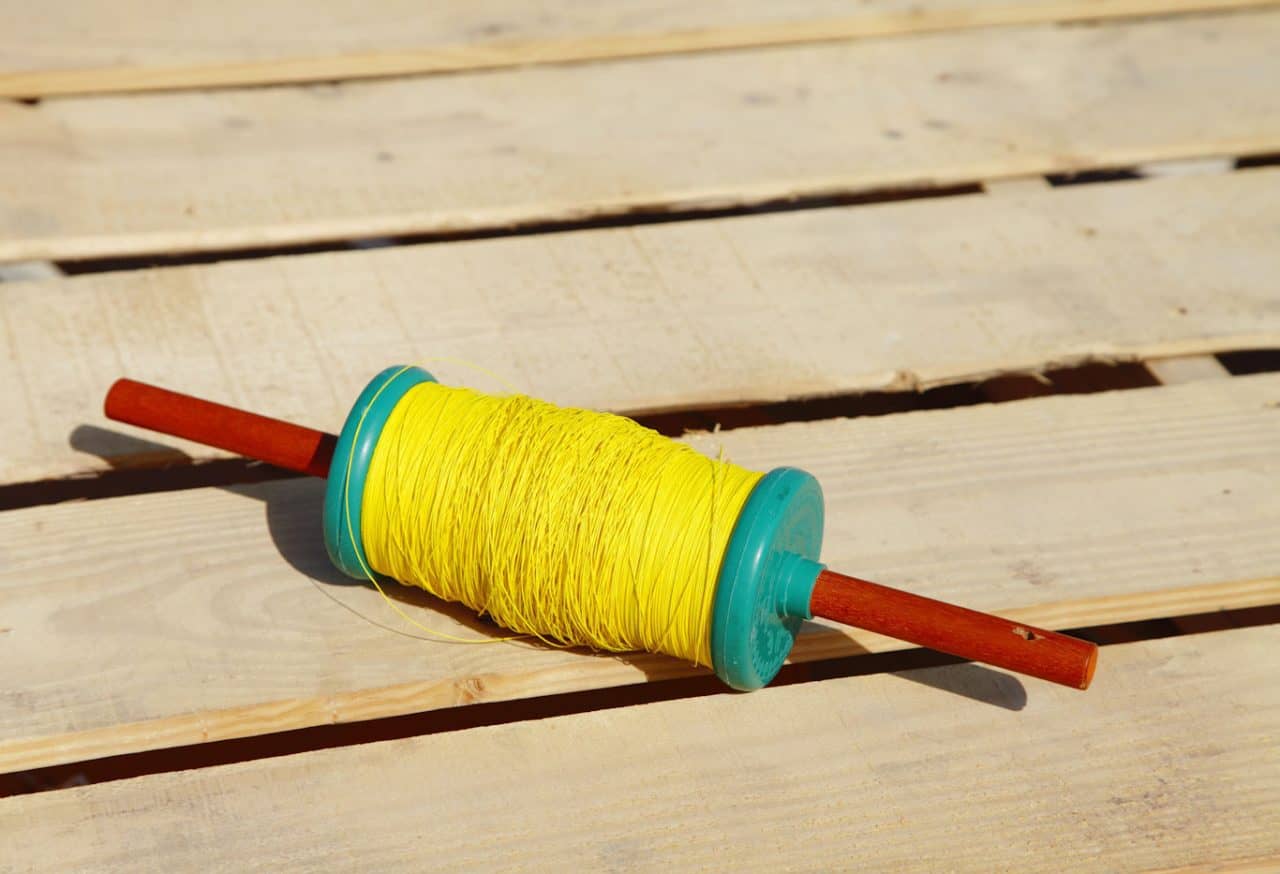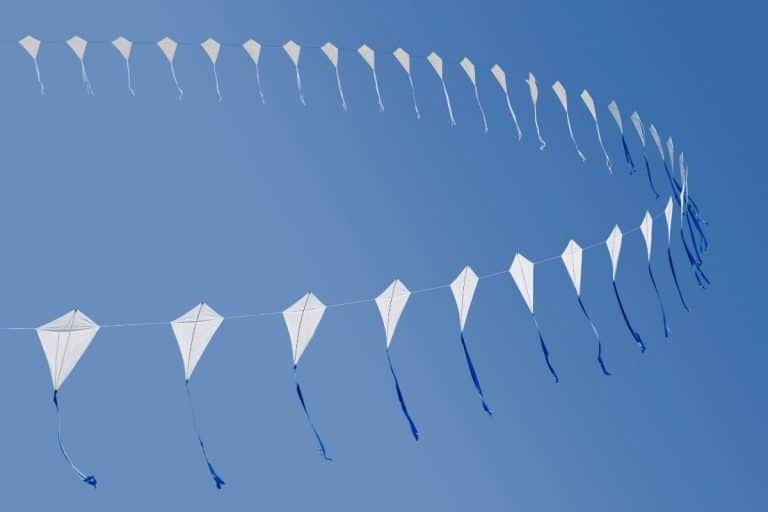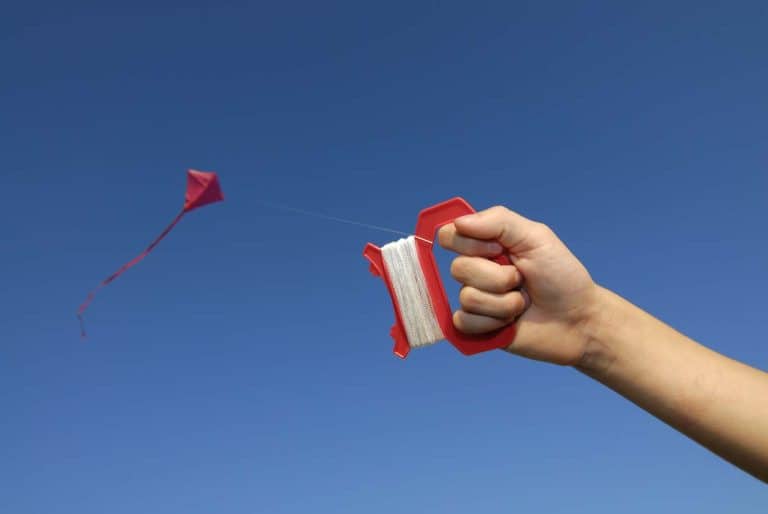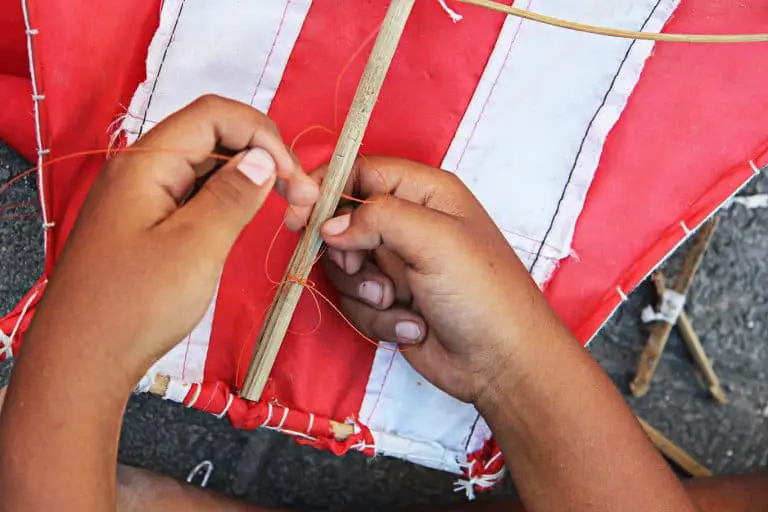Everything You Need To Know About Threads For Kites
Flying a kite can be rewarding if you know every component and understand all of its parts. In addition, learning how to set up a kite for best performance can make a big difference in the outcome when flying it.
This article will tell you everything there is to know about kite threads since choosing the right lines is as essential as selecting a kite.
Let’s start!
What Is A Thread For A Kite?
A kite thread can be called various names. For example, some call it line or string too. But, whatever the name, it still refers to the line that extends from a kite to the kite’s operator.
The thread quality and the specifications of the thread can make a big difference in the kite performance. For example, the size, length, diameter, and weight, can make a difference in your ability to control the kite, avoid incidents, durability, and what you can do with the kite.
The line, string, or thread typically consists of cotton, nylon, silk, wire, polyester, and new modern materials created to add strength and other qualities.

How Do You Choose A Thread For A Kite?
Choosing the right thread can be as essential as selecting the kite. There are different mistakes one can make in choosing a good line.
To avoid them, you should consider the essential characteristics to take into account when selecting a thread, which are:
- Construction
- Length
- Size
- Weight
- Stretch
- Durability
Choosing a small thread can result in breakage, resulting in injuries and kite damage. A too-large line can result in poor kite control or even prevent the kite from taking off. Finally, stretch can impact the ability to control a kite.
If a thread consists of a material that can stretch too much, it can reach the breaking point and prevent a person from controlling the kite. Some threads consist of materials that will stretch and return to the original shape, while others stay stretched.
A long thread can affect the response time, slowing it down. Still, at the same time, those operating a power kite have a better power window and can increase traction. On the contrary, shorter threads can make the response time quicker.
There is no shortage of different types of kite thread of various materials, properties, lengths, and diameters. The best way to know which line is best for your kite is to understand what happens if you use one type instead of another.
Here are some guidelines you can follow.
Threads Length
Length is one of the main factors when choosing a thread. Those operating power kites, or kitesurfing, are most concerned with the line length. The size of the wind one can operate with depends on the thread length.
For example, the shorter the thread is, the smaller the window, which means less power generated. But one has a faster steering ability and a more responsive kite.
On the other hand, a longer thread allows more power generation and higher jumps, but the kite will be less responsive.
It is no good or bad to have a long or short line. It depends on what you need. For example, suppose you are a beginner. In that case, it is better to give more importance to maintaining the control of the kite than the ability to jump too high; thus, you can opt for shorter threads.
While experienced individuals would get annoyed with low tractions and opt for longer threads, still, in high wind is better to use a shorter tread than a longer one.
Typically, a shorter thread is 20 meters, while a longer one is 27 meters.
Threads Material
Threads materials have a high impact on kite performance. Not so much for single-line kites used for amateur purposes, but especially for sport, kitesurfing, and sophisticated kites. The most common materials used today for highly performing kites are Dracon, Spectra, and Spectra blend.
Single line kites, homemade kites for children, and beginners kites generally have polyester (or Dracon), nylon, or even cotton threads.
Dracon threads are not that expensive. Many use Dracon because they have moderate stretch and strength. Since the lines will be heavier when used with stunt kites, the result will be a slower kite response, making it perfect for those learning to fly.
Power kites should not use Dracon lines due to the slower performance and the mild strength. It also has a larger diameter than other threads, and it is not best for use with dual or quad lines kites.
Those looking for something more substantial than Dracon should look at Spectra blends. It is smaller in diameter than Dracon, and you can use them in dual-line stunt kites and giant single-line kites. However, it is still a heavy material (relatively) and unsuitable for light wind flying.
Spectra is the best material for kite threads for dual and quad-line kites, power kites, giant kites, and flying in low wind. It has a tiny diameter, is very light, and can twist without losing control. Although Spectra is more expensive than the rest, it is high-performing.
Stretch
Threads with a lower stretch can help to keep a kite stable. However, kites with multiple lines require a fixed or stable length to remain stable to allow the operator to maintain better control and more responsiveness.
Dracon has a too high stretch, while materials with a reduced stretch are Spectra and Spectra blend.
Weight
Thread weight is essential when flying in low winds or high-performance kites, where heavy equipment can slow down the traction. In that case, one should find threads that use lightweight materials such as Spectra.
Durability
Some manufacturers coat their threads to last longer or withstand higher tensions. Before choosing a line, it is always essential to verify their property and coat type.
High-performance kites are built with threads with unique coats to protect the core of the line and make it more resistant to damage. Although the inner material of the thread is the same, the outer jacket can add extra endurance to it.
Safety Factors To Consider For A Thread
There are other things to consider when dealing with kites threads. For example, if the line stretches too much, it can break. In addition, with normal usage, each thread can wear out. Therefore, it is better to use low-stretch threads or replace them routinely to avoid incidents.
When flying a kite, each thread endures a very high tension, transforming lines into sharp razor blades and becoming dangerous for someone’s hands or other people around it. Therefore, kites operators should always pay attention to handling threads and keep people at a distance when flying a kite.
Fishing lines are dangerous because they stretch and break easily under stress. It is even more hazardous to use steel lines or wires because they conduct electricity and electrocute the kite operator.
Good practices to maintain healthy threads are:
- Check if the lines are equal after every 20h of flying
- Adjust the lines when they are not equal
- Watch out for tangles and knots
- Check for any sign of wear and replace the line
Frequently Asked Questions
What can I use as a kite string?
You can use a polyester line or more sophisticated materials such as Dracon or Spectra lines as a kite string. For amateurs or children kites, it is possible to use cotton or nylon lines, and in some cases, even fishing lines.
How long do kite lines last?
A kite line can last for 2 to 3 years with light usage or up to 30 sessions in more giant or sports kites. The materials’ quality can change the average time a kite line can last.
How to prevent kite string tangles?
To prevent kite strings from tangling, one can use materials with knotting preventive qualities. These types include braided lines that are pretty proficient in moving around and sliding to avoid knots.






